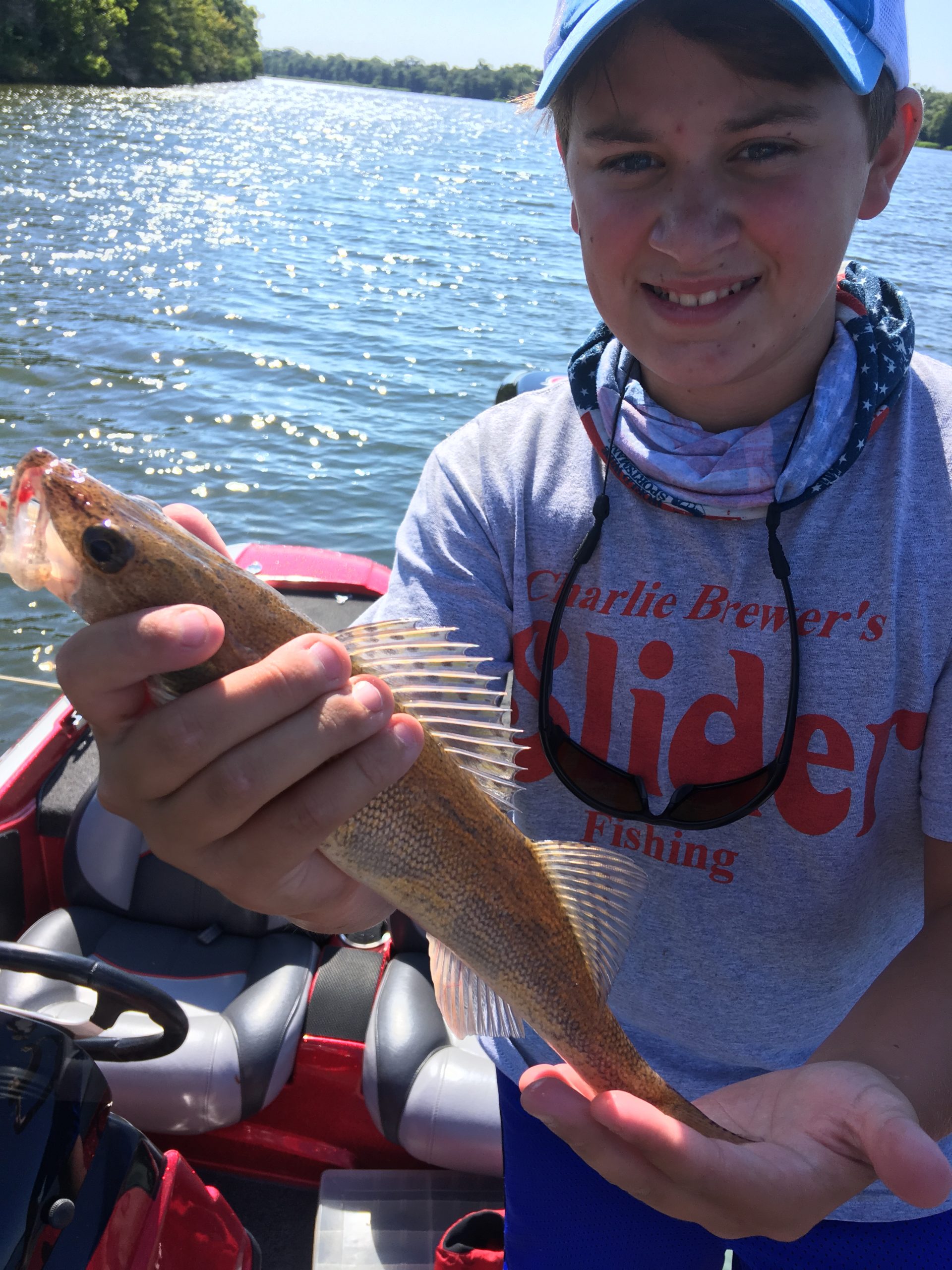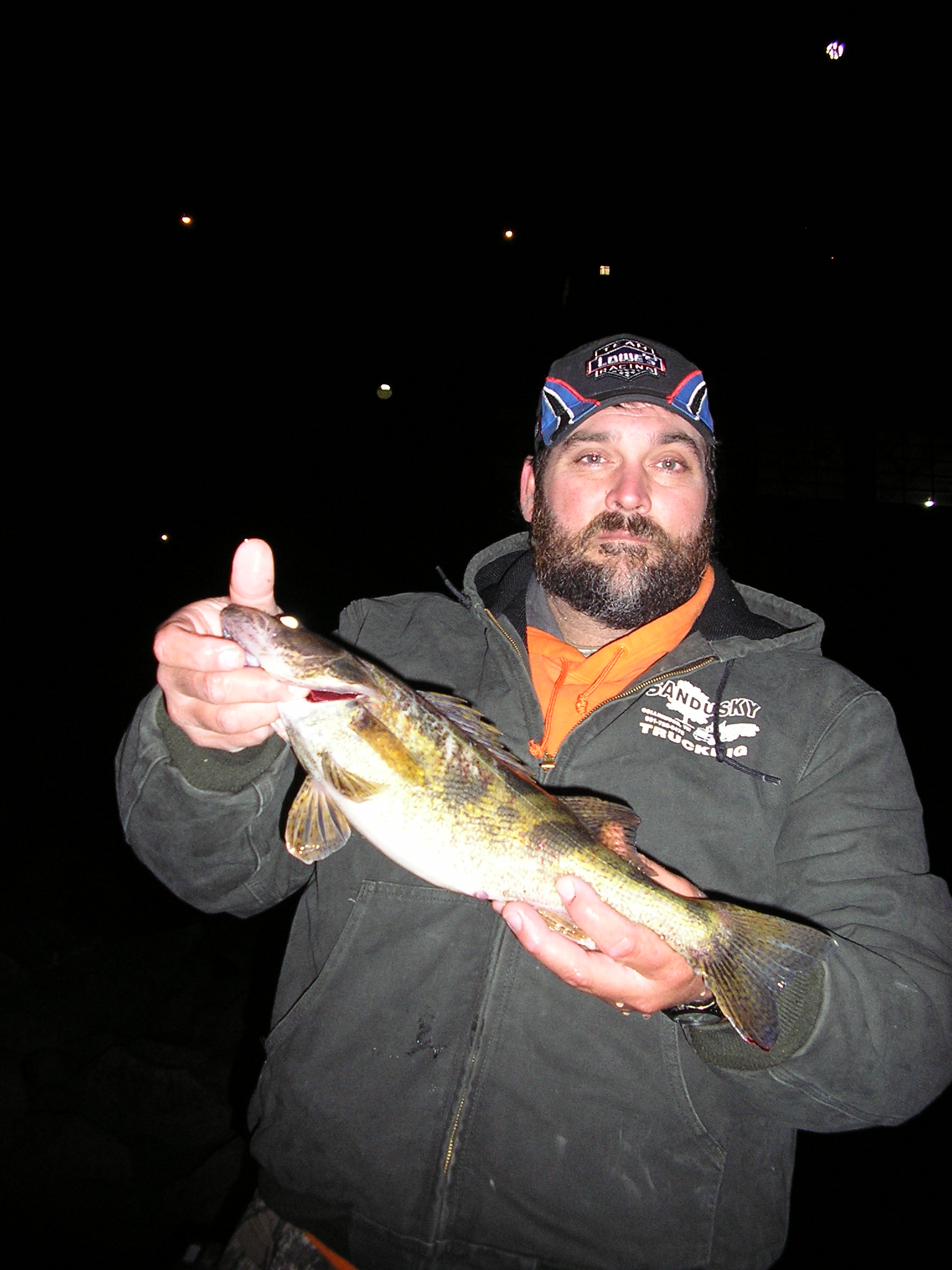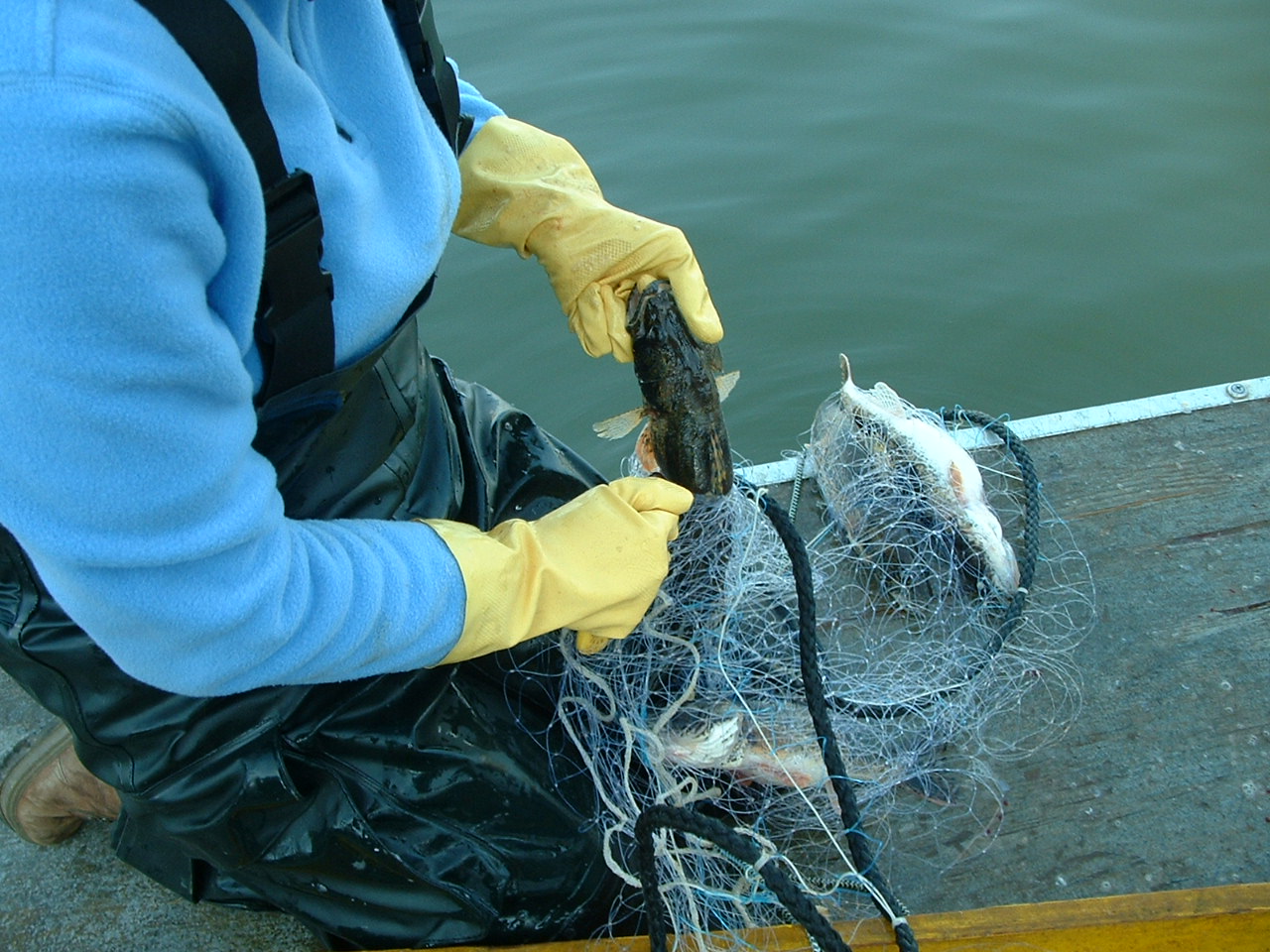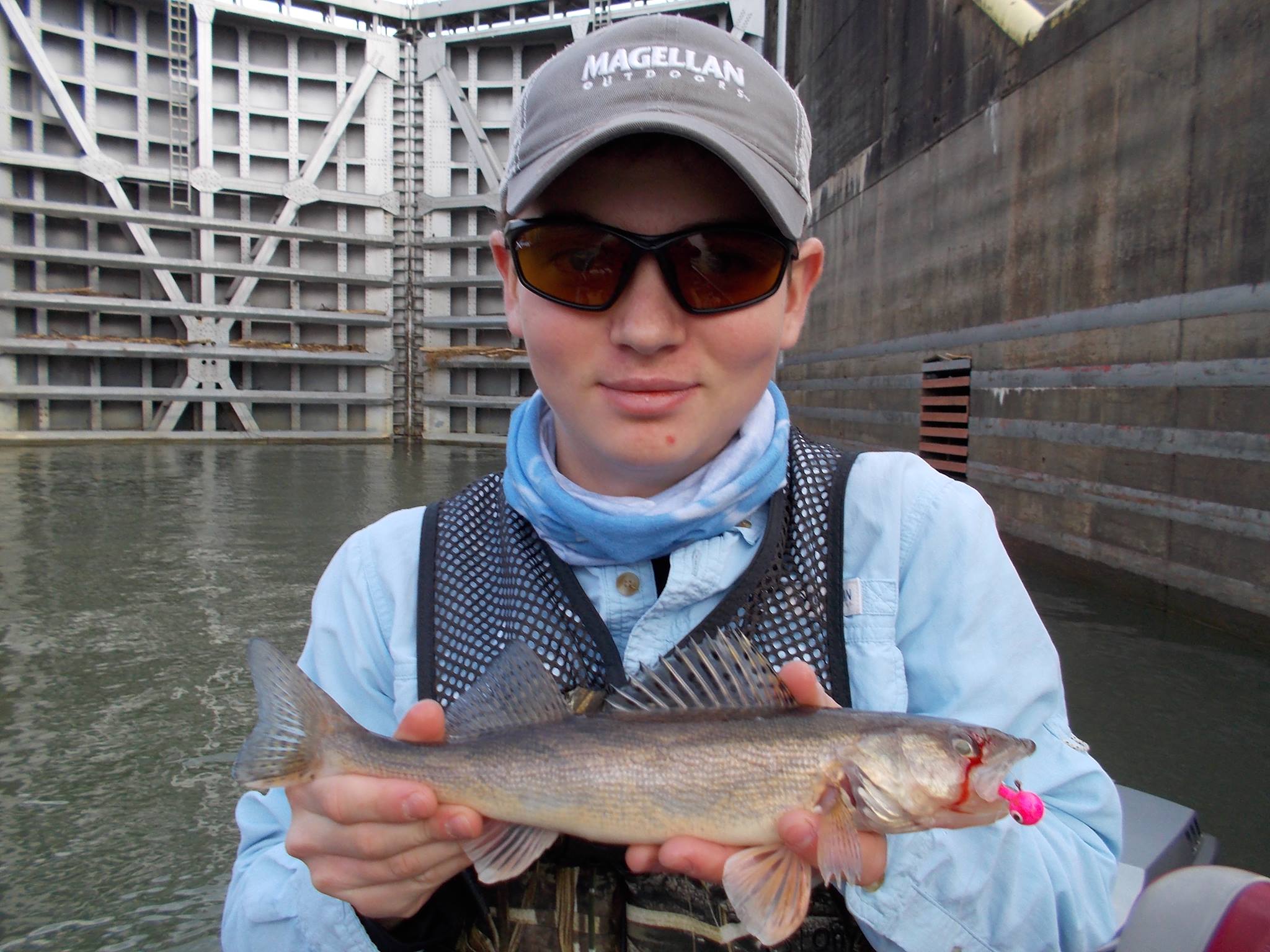Sauger fishing in Alabama has produced many scenes like the following…
The fish emerged from the water a glistening, cylindrical image of gold, brown, and amber, eyes a fiery red, and mouth brimming with teeth.
The young angler who had pulled the fish from the water stared with an overly inquisitive look and soon voiced the simple question that was already etched on his face. “What is it?” he said.
The distinctive catch definitely wasn’t a white bass. The young fisherman had laden his stringer with perhaps a dozen or so “stripes” as they were once commonly called. He also knew it wasn’t a smallmouth. The boy had just caught a decent smallmouth, one big enough to have already developed some tiger stripes down the side, and I had convinced him to release it just a few moments prior.
“What kind of fish is it?” was the follow-up question. “I’ve never caught anything like it.”
I told him the multiple names of the mystery fish. “It’s a sauger, better known around here as a jack or jack salmon,” I said.
“Can I keep it?” the boy asked.
“You had better or everybody up and down this bank is going to be upset,” I said. “It’s the best-eating fish in the river.”
A crowd of perhaps a dozen anglers had gathered on the south bank below Wheeler Dam on the Tennessee River despite the fact that the air temperature hovered just above freezing on a cold December day. I don’t remember if that day was 20 or 25 or 30 years ago.
I do know that the gathering was not uncommon at the time, as anglers from across north Alabama and southern Tennessee congregated below dams during the winter and early spring months along the Tennessee River and attempted to catch one jewel of a fish.
The sauger, a member of the perch family and cousin to the yellow perch and walleye, ranked as a winter prize for local fishermen at a time when fishing for bass, crappie, or catfish was not the year-round pursuit that it would become in the years to follow.
Flash forward to the present. Rarely – actually never – do I see the congregation of anglers below Wilson or Wheeler or Guntersville dams as I once saw them, at least gatherings intentionally fishing for sauger.
The question, in fact, one that I have asked fishermen and fisheries biologists alike over the last dozen years or so, is very basic. “Where have all the sauger gone?”
Once abundant with natural cycles of peaks and valleys, sauger populations have largely disappeared on all Tennessee Valley Authority impoundments in north Alabama. The fish haven’t totally disappeared, but intentionally catching even a few fish became a tedious chore. Only in the last year or so has a hint of a sauger fishing in Alabama rebound starting to occur.
Generally, around 2005 is the time that some anglers remember a decent catch of sauger although scientific studies indicate the population began to decline as long ago as the late 1970s.
Guide Brent Crowe, who fishes many days each year from Pickwick to Guntersville, told me a couple of years ago that he had just “heard of one” being caught. That’s how bad the sauger fishing had become.

Nathan Whitehead shows off a small Pickwick Lake sauger that he caught earlier this year on a Texas-rigged Slider worm.
Guide Gary Harlan told me that it had been “four or five years” since he had seen a sauger in his boat while fishing Pickwick Lake. Guide Roger Stegall said that it was once common for him to catch an incidental limit of sauger while bass fishing on Pickwick.
The days of catching a 15-fish limit of sauger were definitely gone, however.
“I used to catch them down around Bear Creek (on Pickwick) pulling crankbaits for crappie in the summer, something like seven or eight years ago, maybe a little longer,” said guide Brad Whitehead. “I would catch 25 or 30 crappie with four or five jacks mixed in. They were a prize because many of the people fishing with me didn’t know what they were. I used to do that pretty regularly but not in a while.”
The Good Old (Sauger) Days
In my early days of fishing, I spent much of my time below Wheeler Dam with occasional trips to the Wilson tailrace. I watched fishermen catch sauger from the bank by casting jigs while boaters landing better numbers on heavy jigs fished vertically or on live bait around wing walls, locks, and just off the current in the tailrace.
“The Hole” below Wilson Dam, that area between the turbines and the lock, served as perhaps the ultimate destination for boaters, a treacherous, rocky path to a delicious meal. The tailrace below Guntersville Dam was another go-to destination for anglers in that area intent on sauger fishing in Alabama in the winter months.
Long since banned, snagging sauger (and other game fish) was also prevalent, especially below Wheeler Dam and to a lesser extent below Wilson and Guntersville dams. When the current was just right and pushed down the wall that extended downstream from the base of the dam at Wheeler, snagging a limit of sauger was a normal occurrence.

Although there is no exact agreement about the cause, sauger populations have declined dramatically along north Alabama reservoirs on the Tennessee River.
Even after snagging was outlawed in the early 2000s, good numbers of sauger still existed and could be caught in traditional ways.
The fish arrived at the dams around Thanksgiving and lingered through the spawn, usually around March and into April in certain years. They then retreated to their summer habitat, generally downstream into much deeper water where they were largely undisturbed by fishermen.
Anglers rarely targeted them from late spring to early fall, occasionally finding them by accident and catching numbers on deep-diving crankbaits and plastics. Incidental catches of at least a few fish were common among crappie and bass fishermen even during warm-weather months.
“We used to catch them pretty regularly, not a lot of fish but one or two on many trips later in the year,” Harlan said. “I don’t know why that has changed. Maybe it’s because we fish the grass more, but I used to have a couple of spots in Bear Creek (on Pickwick) that you could count on catching a couple of sauger on crankbaits.”
“I used to catch them all the time,” said long-time Tennessee River angler and guide Chuck Marks, of Florence. “You could go sauger fishing in Alabama and catch them or you would catch fish all the time while you were bass fishing. People always liked to catch them because they are so good to eat.”
Speculation about the Decline
No definitive reason exists for the decline in sauger populations. State biologists have suggested at times that the sauger numbers were not as depleted as suggested by fishermen, that the declines were simply the low points in the natural cycle.

Netting surveys early this year indicated a slightly improved sauger population on the upper end of Wheeler Lake in the Guntersville Dam tailrace. These small sauger, commonly called cigar jacks locally, made up a large portion of the catch.
But the lack of fish was obvious, and fishermen were quick to blame various factors ranging from water quality to striped bass for their lack of success. State officials eventually placed a series of limitations on sauger fishing in Alabama, the most recent a five-fish, 15-inch minimum limit implemented in 2016.
What are the exact causes? For the most part, anglers and scientists can only speculate about the specific reasons for the decline.
The water quality argument is an obvious one but does not fully explain how certain other fish populations can flourish – the largemouth explosion on Pickwick, for example – at the same time the sauger have disappeared.
Perhaps the biggest culprit in the perspective of many fishermen has been the continued presence of striped bass, which are present in all TVA reservoirs but especially predominant on Pickwick. Stripers grow big, up to about 40 pounds. A fish that size can easily eat a 15-inch sauger given the opportunity.
Biologists, however, do not agree with the popular theory that stripers are detrimental to game fish populations.
Regardless of what caused the decline, biologists always point to poor recruitment, a technical term that suggests the number of young of a species that survives from birth to a more mature stage.
“The sauger population has shown extreme changes over the past decade,” said Phil Ekema, District 1 Fisheries Biologist for the state Wildlife and Freshwater Fisheries Division who is based in Decatur and works the entire length of the Tennessee River in Alabama. “These changes are predominantly a result of the variable recruitment that is observed on the Tennessee River.”
“One or even two consecutive years of failed or poor spawns have a profound effect on this fishery comprised primarily of one- and two-year-old fish. The more restrictive length limit of 15 inches along with the daily creel limit of five fish will hopefully contribute to an increase in the abundance of fish in this population.”
The causes for the poor spawns are also difficult to pinpoint, but one possibility is the variability of current from year to year – too much or too little current generated by the TVA – during peak spawning times in late winter and early spring. In general, juvenile sauger drift downstream immediately after birth, and too much or too little volume impacts mortality to the point of potentially killing entire year classes.
Overharvest has also probably played a significant role in the past with many of the fish removed from the river being females of prime spawning age of two to five years. Both Harlan and Stegall, long-time guides on Pickwick, suggest the minimum length limit on sauger is too restrictive.

Sauger sampling has been limited in recent years because of flooding. Here a biologist removes a mature sauger from a net.
“We’ve got the limit backwards,” Harlan said. “(Based on the current restrictions), we are throwing back the ones that we need to be keeping and keeping the ones that we need to be throwing back.”
Added Stegall, “I think over 14-inch fish most of them are going to be females. I think when we were keeping any-sized fish, we had a lot of sauger. I think we are killing the females and releasing the males.”
Rays of Hope
For those anglers feeling nostalgic about the good old days of sauger fishing in Alabama, some positive news can be reported from the last couple of years. At least a few fish have started to re-appear, especially on Pickwick and on the upper end of Wheeler below Guntersville Dam.
“I started to pick up a few fish early this year,” Marks said. “I can’t really explain it. I don’t know why they disappeared all those years, but suddenly you’re catching a few in the same places that I used to catch them regularly.”
Marks, in fact, said he caught a good limit of 16- to 18-inch fish while he was bass fishing back in the spring.
“I’ve actually heard some good things from other people on Pickwick,” he said. “I’m not talking about a lot of sauger, but at least people have caught a few on more than one trip this year.”

In addition to his duties as a state fisheries biologist, Phil Ekema finds time to fish the Tennessee River. Here he is with a solid keeper sauger that he caught in January 2016 below Guntersville Dam.
Ekema echoes that idea, both from personal experience but also from a scientific perspective.
“It seems like the sauger started making a comeback two winters ago,” he said. “My son and I caught five short fish and one 16-inch fish in January 2016 (below Guntersville Dam). Reports from this past winter were respectable.”
“Positive changes in the abundance of sauger are beginning to be noted.”
Ekema said he had received reports of better catches from the fishing community and improved results from winter sampling. Flood conditions during the winter months in recent years had kept sampling surveys to a minimum, but netting in February of this year produced 174 sauger for Ekema. Most were in the one to two-year age range, indicating that spawning had taken place in recent years and an improved number had survived.

Phil Ekema’s son Andrew caught his first sauger in January 2016 below Guntersville Dam on the Tennessee River.
Sauger fish grow fast, reaching 15 inches and sexual maturity by age two. Ekema’s netting surveys revealed at least some mature females capable of reproducing.
Whether the sauger population will ever recover to the levels of years ago remains to be seen. At least some hope exists now, something that didn’t exist five years ago because the fish had become such a rare catch.
In the minds of some diehard fishermen, sauger fishing in Alabama was once a mainstay of winter fishing on the Tennessee River. A continued lack of the delectable fish certainly leaves a major void for fishermen. Here’s hoping that they come back.
This article first appeared in the December 2017 print issue of Great Days Outdoors Magazine. For more great hunting and fishing content for the deep South, subscribe to Great Days Outdoors print and digital editions or click the image to download this issue.

